buying guides
How to choose the best ovulation test
This page contains affiliate links, which means we may earn a small amount of money if a reader clicks through and makes a purchase. All our articles and reviews are written independently by the Netmums editorial team.
If you’re trying for a baby, the key to conceiving is to make sure you’re having sex during the most fertile period of your menstrual cycle: that is, around the time of ovulation.
Generally, this happens roughly halfway through your cycle, but the more precise you can be about it, the better the chances of getting pregnant. Even if you have regular cycles, there can be variations in the menstrual cycle characteristics, including the day of ovulation, according to research published in the medical journal Current Medical Research and Opinion .
Therefore, the best way to know if you're ovulating is to use an ovulation test , which detects when your body is about to release an egg. That way you'll know the best time to have sex to conceive.
Here, we feature some of the best ovulation tests as well as information about how to choose the right one for you.
How do ovulation tests work?
Ovulation tests work by measuring the levels of key fertility hormones, specifically luteinizing hormone (LH), which surges the day before ovulation, indicating that it's imminent.
Some ovulation tests also measure an oestrogen metabolite, estrone-3-glucuronide (E3G). E3G levels rise over the 5 days before ovulation.
These can be up to 99 per cent accurate in identifying your most fertile time, with kits that test both hormones being more reliable than those that just check one or the other.
You’re most likely to conceive in the 12 to 36 hours after the hormone surge.
How much should I spend on an ovulation test?
Ovulation predictor kits start from as little as a few pounds for a bumper pack of basic dipstick test strips, like the kind a doctor would use to test your wee for a urine infection. These work like a pregnancy test by testing the levels of hormones in your urine. Coloured lines appear to indicate whether you’re about to ovulate.
Although there’s no real difference in accuracy between these tests, the cheap ones require you to collect a sample of your urine in a clean container first thing in the morning and dip the stick in to test your hormone levels.
These are good value if you’re planning to chart your fertile times long term, but can be a bit of a faff to use.
The more expensive branded sticks are more convenient, as you just need to wee on the test – no collecting or cleaning necessary – but costs can obviously mount if you take a while to get pregnant.
Increasing the budget for a digital ovulation monitor means that while you’ll still have to pee on a test stick, the machine will interpret the results for you and tell you clearly when you’re fertile.
You can also store useful information like the details of your past few cycles and the dates on which you had sex, but you’ll need to buy new test sticks each month.
If you spend a little more, you can buy more sophisticated ovulation tests, which work on the same principle but are more like conventional pregnancy tests, where you wee on the stick. These tend to be a little clearer to read, for example showing a smiley face if you’re in your fertile period.
How much you spend depends on how confident you feel reading test strips or whether you'd rather get a straightforward result like a smiley face.
At the upper end of the scale are digital fertility monitors. These cost from around £60, plus about £15 per month for replacement test sticks.
What else do I need to know about ovulation tests?
If you’re using a standard ovulation kit that tests your urine, it’s helpful to know roughly when your fertile period is likely to start, so you don’t waste sticks by testing at times when you’re definitely not fertile.
This is usually around the midpoint of your cycle, but you can find ovulation calculator tools online that will help you work out when to begin testing.
Alternative to ovulation tests
An alternative to urine testing is saliva testing also called fertility ferning test. You place a drop of your saliva on the lens and wait for it to dry before examining it; if the sample looks like blobs, you’re not in a fertile period, but if it looks like ferns, it’s a good time to try for a baby.
For this, you’ll need a microscope: special ones designed for assisting fertility cost around £25. Fertility microscopes are pocket-sized microscopes that look a bit like a lipstick. These take a little more expertise to use, as you don’t get a straightforward yes/no result.
There’s no extra monthly outlay with these, although they can take a bit of time to master. Salivary ferning microscopes aren’t as accurate as urine tests, as the fern pattern sometimes appears at other stages in your cycle.
There is a third way to test for ovulation, which involves taking your temperature daily and plotting it on a chart. A rise in body temperature that lasts three days indicates ovulation.
However, this can be affected by many factors, including broken sleep or alcohol, so is less reliable.
The best ovulation tests
Overall Best Ovulation Test: Clearblue Advanced Digital Ovulation Test kit
£30.32
* At-home urine test which pinpoints 4 or more fertile days**
* Tracks 2 key hormones - LH and estrogen/E3G
* Easy to read as a smiley face appears if hormones are detected
* Reusable reader – If you have ovulation test sticks that you didn't use, you can use them with the same test holder to identify your fertile days next cycle
Clearblue sell these in handy packs of 10 and the digital interface is easy to read while the ergonomic handle makes them easy to use.
How reliable are Clearblue Advanced Digital Ovulation Test kits? – More than 99% accurate.
** Based on a Clearblue study of 87 women, 4 or more fertile days were identified in 80% of cycles using actual cycle length.
Best budget ovulation test: One Step® 20 x Ovulation Tests
£3.05 for 20
These ovulation tests are simple strips that you pee on and in 10 minutes you'll see a control line and results line.
* Simple, reliable and 99.9% accurate
* All tests are individually foil wrapped and sealed with long expiry dates
* Only cost around 15p each
* Detects LH
You can buy these basic strip tests in bulk from Amazon, with a bumper pack of 90 individual test strips costing under £10, or you can buy as few as 10 at a time for just a few pounds.
How reliable are One Step Ovulation Tests? – These are 99.9% accurate in laboratory settings. In a home setting their accuracy may drop and some Netmums members report a bit of confusion on reading the results.
Best for Monitoring: Clearblue Advanced Fertility Monitor
£95.17
* Proven to increase the chances of getting pregnant naturally by 89%**
* The only monitor you can also use to test for pregnancy
* Shows high and peak days
* Provides daily fertility status updates
* 99% accurate at detecting the LH surge
* Monitors 2 hormones
This Clearblue advanced fertility monitor has an easy touch screen, and can also double as a pregnancy test.
How reliable is the Clearblue Advanced Fertility Monitor? – 99% accurate.
** In the first 2 cycles of use. Robinson JE.,et al. Fertility & Sterility (2007)87: 329-334
Best for Women with PCOS or endometriosis: OvuSense
£20 a month - £299 lifetime
OvuSense predicts ovulation in real time and so is said to be clinically proven to work if you have PCOS, or other issues like under or over-active thyroid, endometriosis or irregular cycles. You insert the OvuSense sensor into your vagina every night and in the morning take it out and download the data to the OvuSense app.
* Shows what's happening throughout your cycle using an algorithm
* Predicts and confirms ovulation for each cycle
* 99% accuracy
* Identifies up to 5 more days when you are fertile
* Track LH in urine as well as skin and basal temperature
* Works with the OvuSense app (Apple and Android)
* 24/7 support via Live Chat
Because OvuSense works by monitoring you over time, you pay over time, with plans starting from £20 plus a £79 up-front payment, up to £299 lifetime access.
Last updated: 13 April 2023
Checklist
- Most ovulation tests work by detecting a surge of fertility hormones in your urine, showing when you’re fertile.
- Ovulation monitors track your fertility over time.
- Cheaper sticks are just as reliable but more fiddly to use. The more expensive ones are easier to use and read.
- You can also check for fertile times using a salivary ferning microscope, but the results are harder to interpret and less accurate than urine tests.
Read on:
- How to choose a pregnancy test
- The best pregnancy tests for under a fiver
- How to fake a pregnancy glow
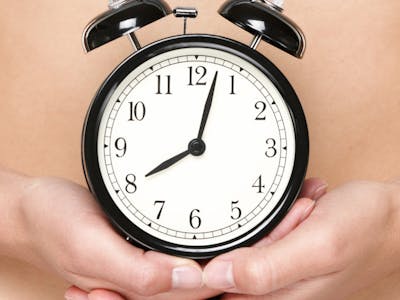

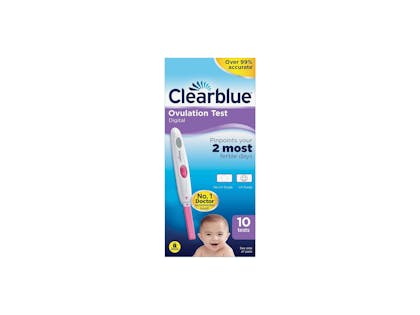
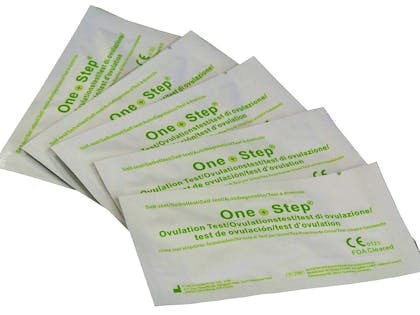
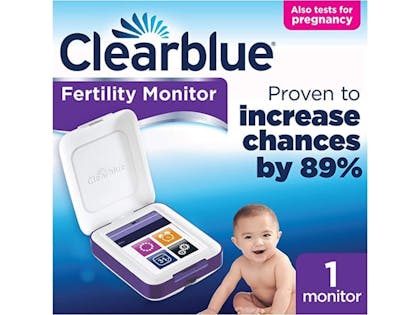
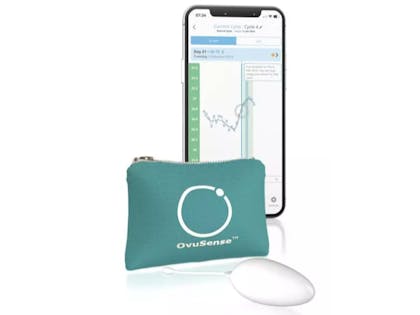
 '
'



